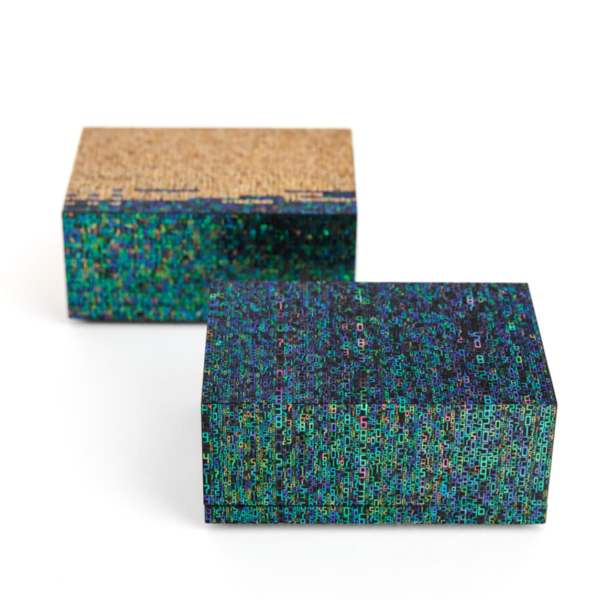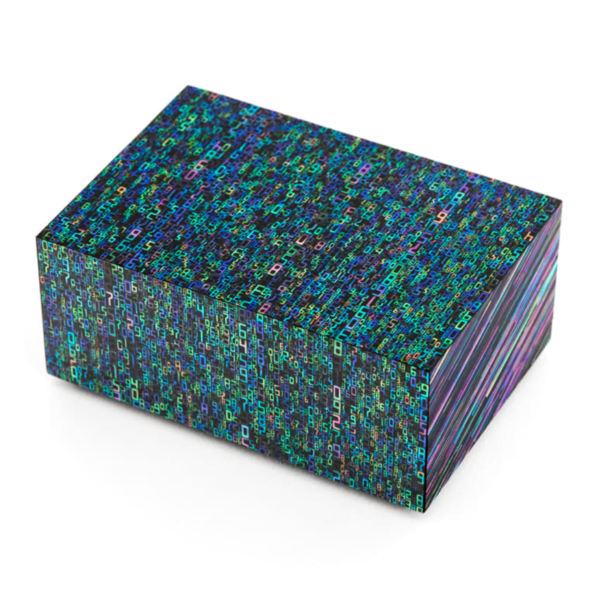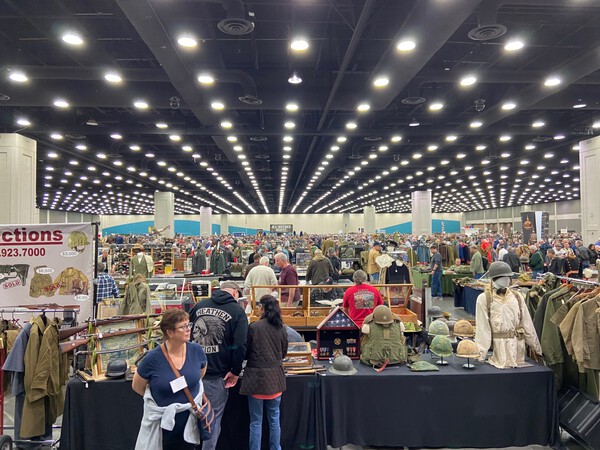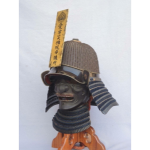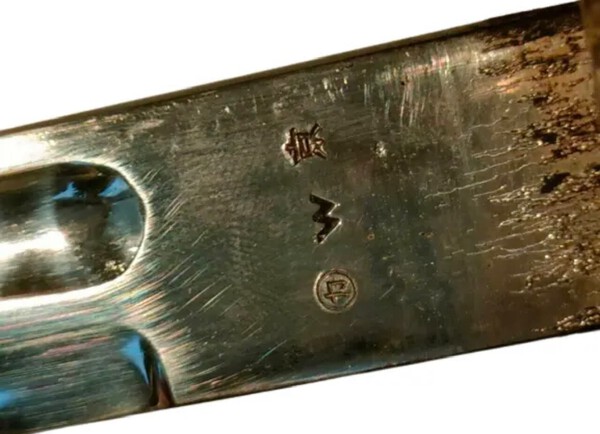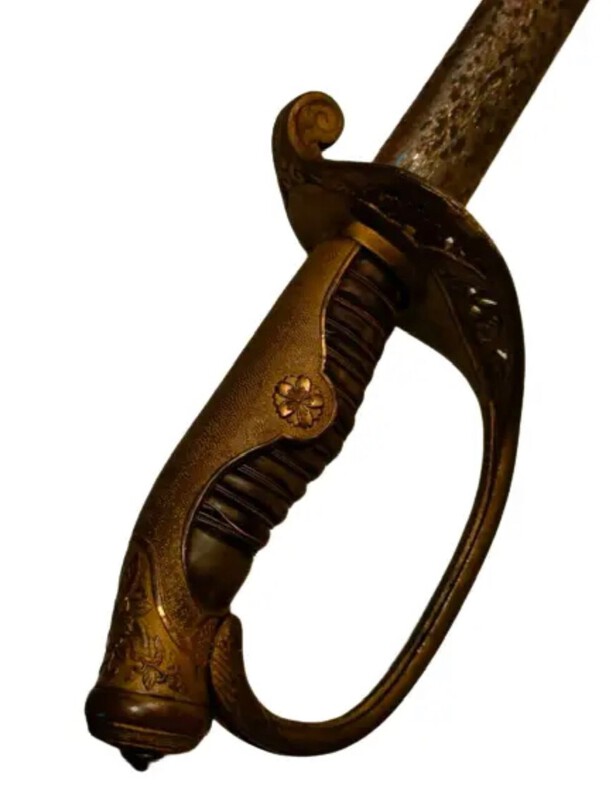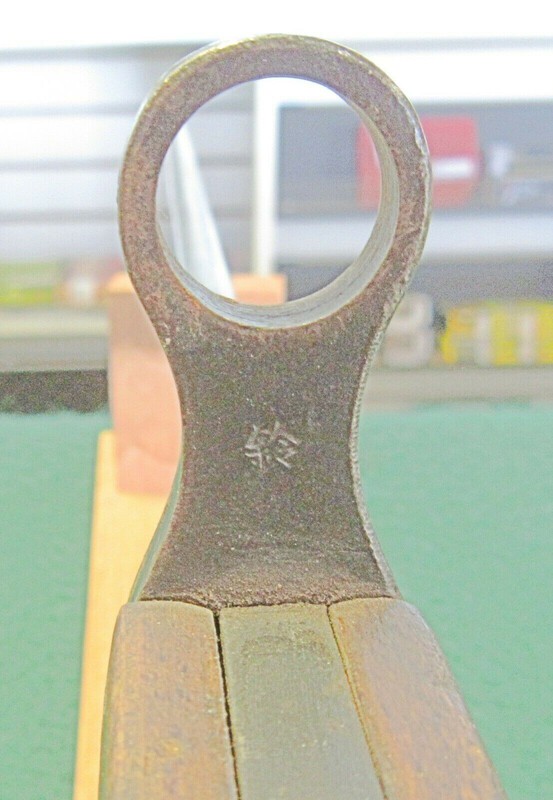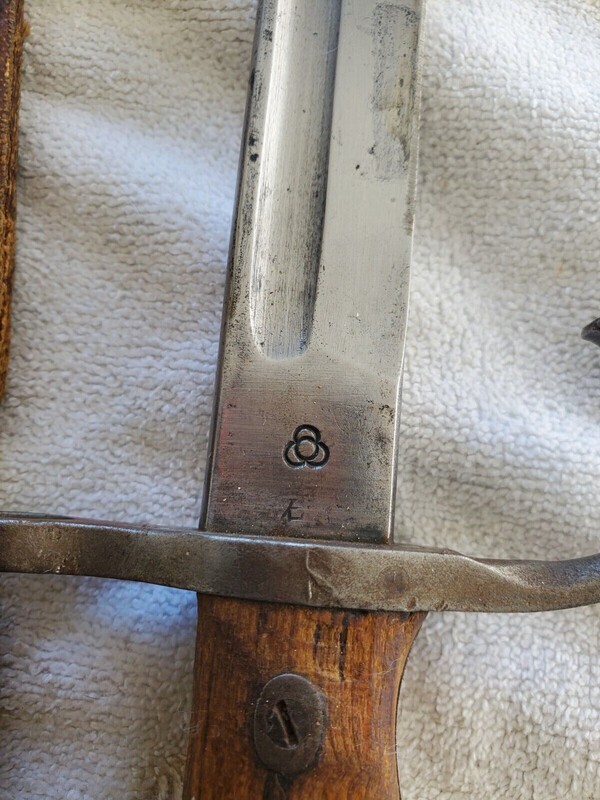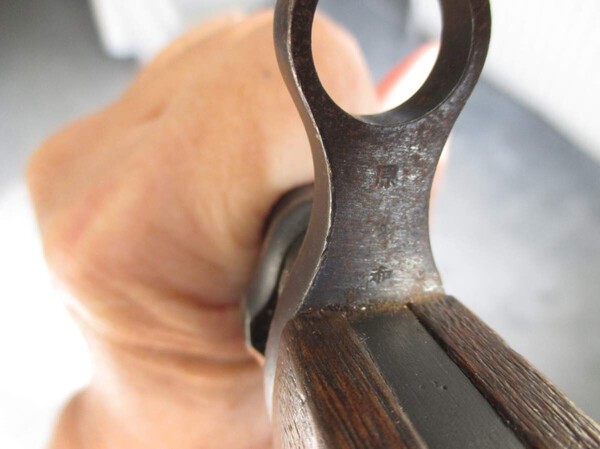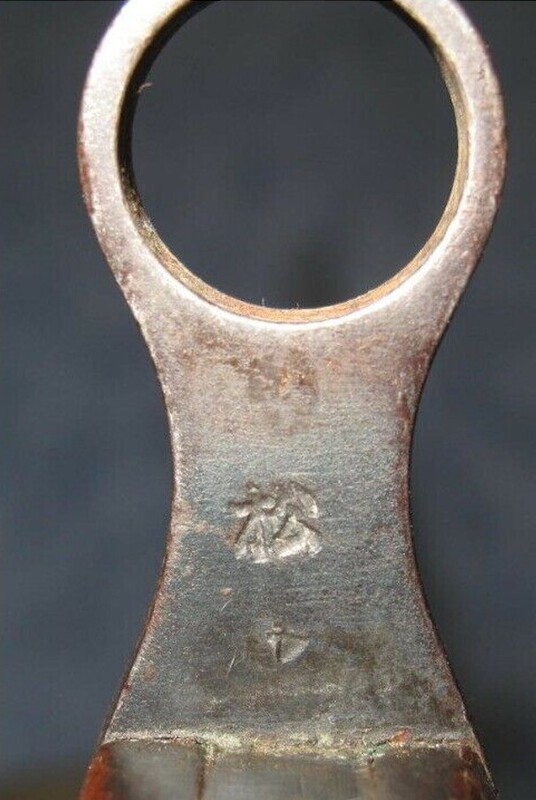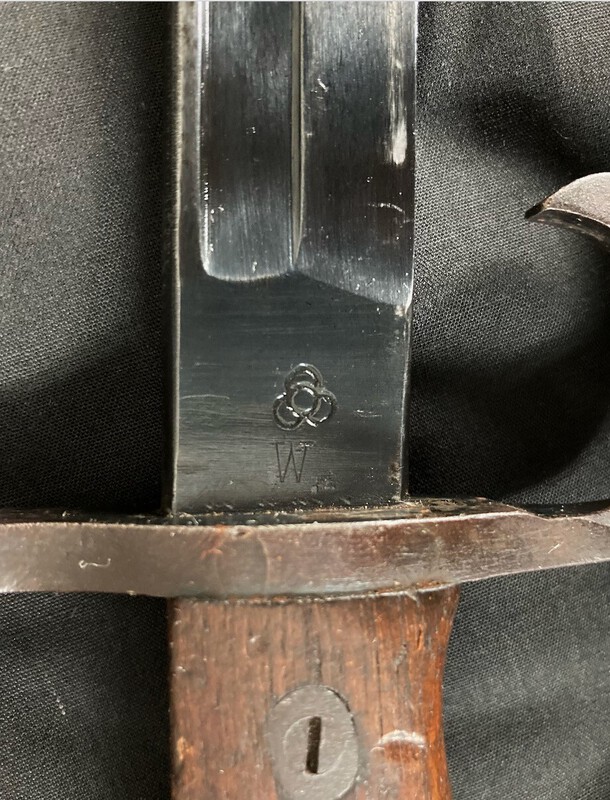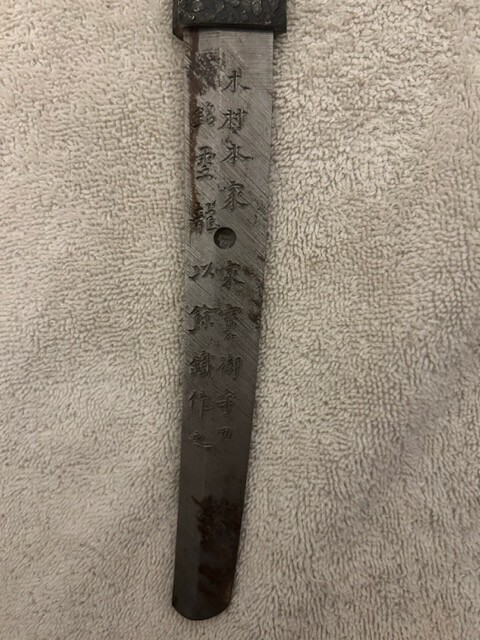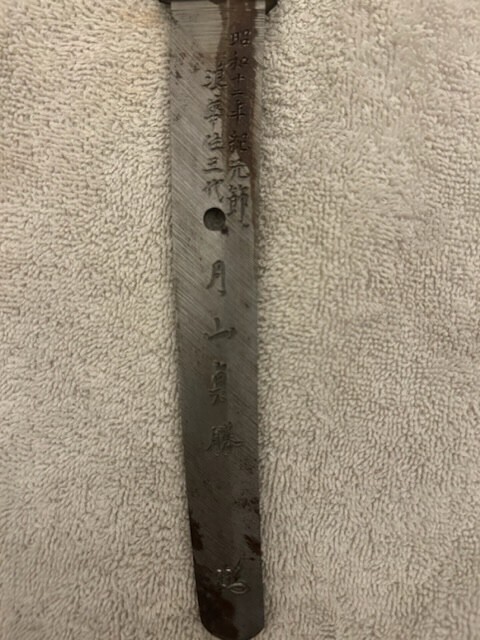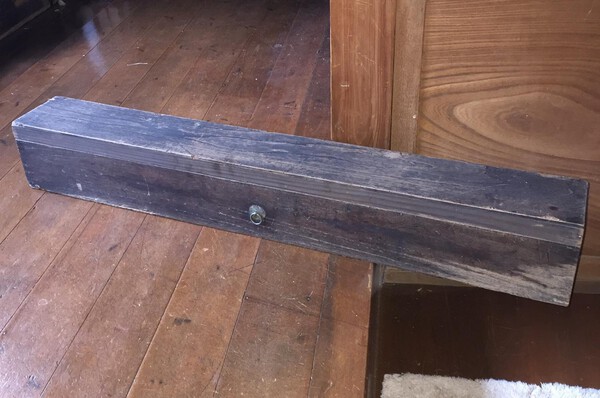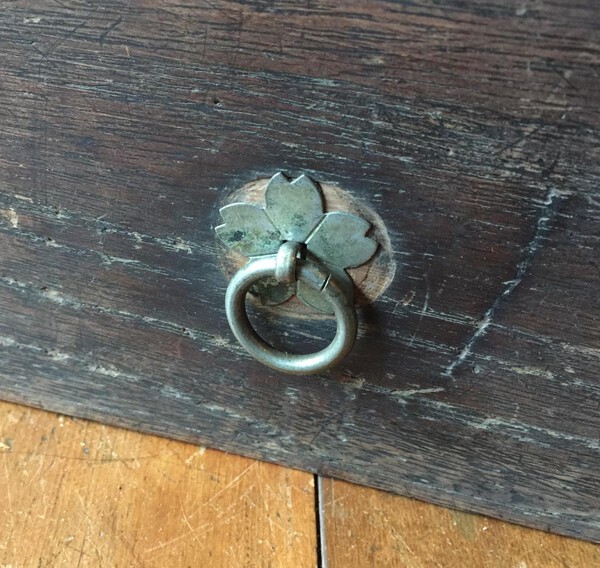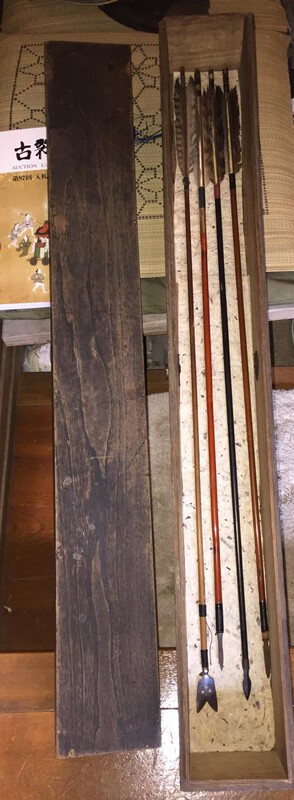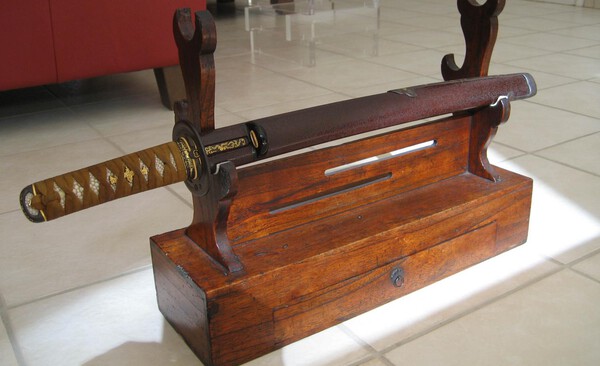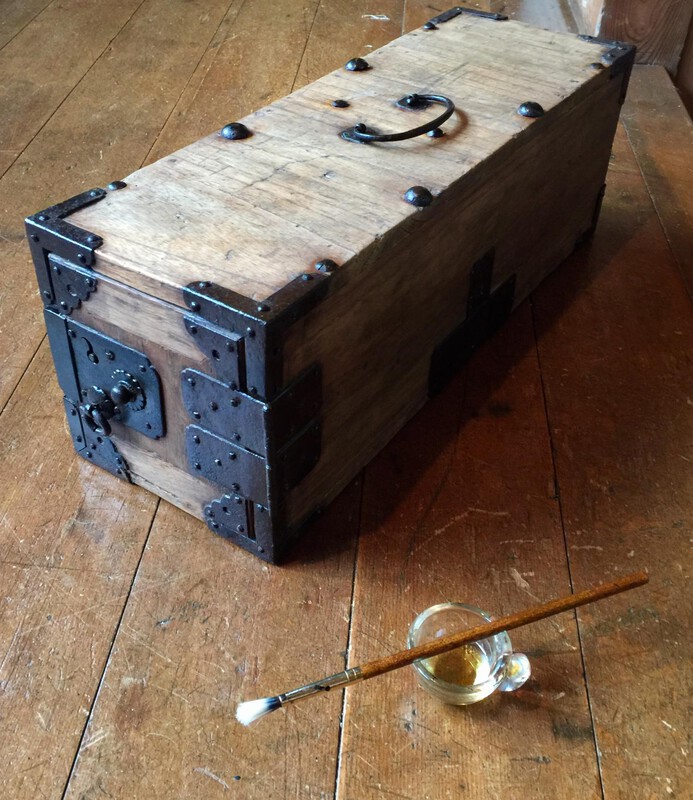Leaderboard
Popular Content
Showing content with the highest reputation on 02/24/2023 in all areas
-
1. I think 妙を示し is referring to the smith's skill, so the emphasis would be that the variation shows how skillful he was. Kind of a minor point because your translation essentially carries the same meaning. 2. I wouldn't use Yamato spirit, because "Yamato spirit" is almost a set-phrase for 大和魂, which is different from what Tanobe is trying to say. I would suggest "Sōshū-den with some Yamato-den characteristics" 3. Confirms the attribution is maybe too strong here. Tanobe is convinced. And he's suggesting anyone who views these attributes will be convinced. But this is slightly different from confirmed. Again, a minor point. Something like: "The Sōshū-den with elements/characteristics of Yamato-den convince me (or "convinces one" since its better to leave in the 3rd person) that the sword is the work of so-and-so. Or, "leads one to believe" is another reasonable translation. That's my take anyway.6 points
-
Hello everyone. For a few weeks I've been collecting detailed vocab (kanji) as a way to improve my reading skills, sort out a few longstanding points of confusion/ambiguity, explore topics I may have previously glossed over, etc. I've found some very nice sites in the process—this Japanese page has been great, for example—and found a few gaps in my academic knowledge that I am working on filling. On the one hand it's "just vocab," but on the other hand, really making sure I know what each kanji means and how it relates to others has been surprisingly illuminating. One such gap has been the deeper religious significance of many horimono. I could previously identify the motifs in a simple way ("that's Fudō Myōō, that's a suken, that's sō-no-ryū with a flaming pearl" etc.) but it is only recently that I learned of a few deeper connections bridging the many ken motifs. The following will undoubtedly be painfully old news to many of you, and perhaps woefully incomplete besides; but for the newbies and intermediates among us, I hope it may be useful information as it was for me. I rush to add that this is just an edited summary and amalgamation of many other peoples' work, especially this page. I will append as many of the sources I used that I can recall (with the most relevant at the top). ----------- 剣 Ken We all know (I presume) that ken are, in general, buddhist ritual objects in the form of a double-edged straight sword, often represented in various stylistic ways in blade horimono. Of particular interest is the distinctive "vajra" hilt. But what is a vajra exactly? 金剛 Kongō (vajra) Vajra (kongō in Japanese) is a sanskrit homophone for both lightning and diamond, symbolizing unstoppable force and immovable spirit. The physical vajra is ostensibly a weapon, but like the ken is really a ritual object, meant to overcome evil via the indestructible truth. It is symmetric with a varying number of prongs at a given end. One (dokko), three (sanko), and five (goko) are typical; three is most common. It often has demons' eyes running down the center, and lotus blossom patterns to either side. 独鈷 Dokko (Tokko) (single-blade vajra) This motif also represents a spoke in the Buddhist wheel of law. This is not directly related to the following items, but as it is a motif sometimes seen in horimono/menuki, it is worth mentioning. 三鈷 Sanko (trident vajra) The sanko represents the three jewels (sanbō 三宝) of Buddha, Dharma (law), and Sangha (community). This is the common form used as the hilt for certain kinds of ken. 宝剣 Hō-ken (treasure sword), 三鈷剣 Sanko-ken, or 金剛剣 Kongō-ken (vajra sword) So now we have come full circle and have a little bit better understanding of what the hilt of a ken is, and why this form of ken is called hōken or sankoken. But what is the significance of turning the vajra into a sword? 不道明王 Fudō Myōō (literally "immovable wisdom king") Acala-vidyaraja in the original Sanskrit. A worthy accounting of Fudō's meaning and importance to Shingon Buddhism would be impossible here, but we can address some basic points. The highest of the Wisdom Kings, a category of deity following Buddhas and the Bodhisattvas, he is a manifestation of the Buddha Mahāvairocana. He is wrathful in the pursuit and eradication of evil from men's hearts. Wreathed in flames, he burns away earthly ties. He has blue skin, and sometimes even crooked fangs. In his left hand he holds a kenjaku 羂索 (five-colored lariat) used to bring wanderers back into the true path, or to bind harmful emotions. In his right hand, he holds the kongō-ken 金剛剣. If the kenjaku should fail to restrain men's violent passions, Fudō can cut their earthly ties using this sword. Thus the hōken is a means by which Fudō cuts through delusions and overcomes evil. For this reason, this sword is also called the chiken 知剣 — sword of wisdom. 素剣 Suken A stylized representation of a ken blade. As far as I know it has no further significance other than that inherited from the above points. However, as in the second image, sometimes it has a base with a tsume 爪 (claw)—specifically that of a dragon. Which brings me to… 剣巻龍 Kenmaki-ryū (dragon wrapped around ken) or 倶梨伽羅剣 Kurikara-ken (dragon king sword) Another common horimono theme is the dragon wrapped around a ken. Sometimes it is wreathed in flames (sound familiar?). This is not simply an arbitrary mashup of images: There is a legend that Fudō was challenged by another deity. They both manifested as flaming swords (ken) and found they were evenly matched. However, Fudō then transformed into a dragon, wound around the other sword, and ate it from the top. Thus, the dragon-king Kurikara 倶利迦羅 is actually another representation of Fudō Myōō. On a related note, Kurikara is golden in color; thus, depicting him in actual gold is not just for materialism's sake. ------- I invite everyone's corrections and comments as I was only peripherally aware of these themes before doing this research, and am still quite a novice when it comes to the deeper religious dimensions of horimono. There are many other interesting connected themes in other horimono, but I wanted to focus on this variety tonight. I hope it has been of interest! Regards, —Gabriel -------- Sources include, but were certainly not limited to: http://world.choshuya.co.jp/engrave/index.htm (most images) http://new.uniquejapan.com/glossary/ (the image of the ken) http://nihonto.ca (the image of the suken) bujishugyo.wordpress.com (connection between Fudō and Kurikara; Fudō image) http://www.onmarkproductions.com/html/o ... senju.html http://www.aisf.or.jp/~jaanus/deta/k/kongousho.htm http://www7b.biglobe.ne.jp/%7Eosaru/index.htm Connoisseur's (Nakayama) Harry "Afu" Watson's glossary (Nihon Tōkō Jiten etc.) http://www.thejapanesesword.com/terminology Wikipedia (yes, I know…)5 points
-
I've added a red love-heart necro 'like' to the OP original post as I cannot ever remember seeing this thread/article before, more so as I have a lovely Echizen Shimosaka kiriha katana with very well executed horimono. I shall now read the entire thread with very close attention. A belated thank you to Gabriel. Dunno how I could have missed this and I wonder how many 'old' threads could do with an occasional update for newer members. BaZZa.5 points
-
Did anyone see the four sets of gunto menuki for sale on Jauce recently ? Each of the sets had a mon on the middle of the menuki as you would see on a high quality gunto mount . To my eye the silver mon looked a bit thicker than usual and they didn't have the stippled effect on the cut away areas that you see on the real ones. I decided that they were reproductions but there were 119 bids and someone liked them well enough to pay 41500 yen for them . If they were really left over WW2 stock then it probably shows that some of the Mon, we assume are family Mon, are just something nice that was picked out of a dealers stock. Today I saw four more sets for sale which reinforced my view that they are modern reproductions I put this up as if it isn't bought to light people will soon believe that these are genuine old pieces ( like the mon on the 1944 pattern sword ) Ian Brooks4 points
-
The surrender took place on USS Panamint (AGC-13) on 1945-09-09 at Ōminato, Aomori Prefecture The links below will provide background information and pictures of the surrender. Vice Admiral Ugaki can be seen at the crew photo link along with his signature at the bottom link. USS Panamint (AGC-13) USS Panamint (AGC-13) Crew Photo Collections ORIG WW2 Japanese Surrender USS PANAMINT Navy ship booklets-1945 Japan-vtg-photo4 points
-
If the press release and plaque is correct in that it is coming from the Commanding Officer of Japanese Naval Forces of Hokkaido and Northern Honshu, then the sword belonged to Vice-Admiral Ugaki Kanji 宇垣完爾, commander of Ōminato Guard District 大湊警備府 from 1945-03-15 to 1945-11-30. Ōminato Guard District4 points
-
Hello friends of the Nihonto Community. After some serious consideration once more. I have decided to list my Ono Yoshimitsu Daisho for sale once more. I listed it once during christmas and changed my mind afterwards. But ultimately, I have decided to let these move out of my collection to make room for others in the future. I originally bought these from Darcy Brockbank who listed these as a consignment for once of his clients. This was an custom ordered Daisho by the Mukansa smith (he's a genius) Ono Yoshimitsu. Grab it before I change my mind again haha. All the details are in these write up by the late Darcy Brockbank. In my opinion, that man wrote and displayed one of the best sword dealing websites I have ever seen. Reading his write-ups was one of the most enjoying past time for me. I would spend hours on his website. He has described these blades perfectly. Asking Price 74,500 AUD ONO.3 points
-
Thomas: This picture illustrates why I believe the tsuka has been rewrapped (or I suppose replaced). The section on the right is the original condition. You can see the same and cord wrap with exposed chuso. The section on the left is the way it is now with the green ito covering the same and the chuso. John C.3 points
-
3 points
-
I believe that a shoji-mei / special order inscription would only appear on the sword that is given to that owner. The kageuchi would remain unsigned or signed differently.3 points
-
3 points
-
3 points
-
Also, not to detract from Noah's discussion (and Brian can move this to the Gassan thread, if appropriate) but I was comparing Noah's blade to another found by @Stephen for my kakihan files and the inscriptions on both sides are the same, even the date of February 11 1937, yet they are clearly different blades! The other one is posted HERE and is fully polished, shiny habaki, posted back in 2016! I seriously doubt Sadakatsu could make 2 blades on the same day (Ok, I know it took many days to make a blade). Why would they both be named the same name for the same family with the same date? Is it possible the family commissioning these blades wanted 2 (or more) for gifts?2 points
-
2 points
-
Nice Ama-ryu. I like this tsuba, and the tagane may be hitting on the thickest part of the iron, to help squeeze the walls of the nakago-ana slightly closer together... (?)2 points
-
2 points
-
Probably. But I think it is not too distracting, so it remains an interesting TSUBA, I think (AIZU SHOAMI ?).2 points
-
2 points
-
Good spot, Simon. They may also be US made examples, as the Japanese copied the Sam Browne belt design. It is always safer to purchase the specific Japanese versions just to be safe. A few different types can be found here:2 points
-
Well I be darned, that is his signature below that of Vice Admiral Ugaki. The plot thickens! 星野利元 Fiftieth Army (Japan)2 points
-
2 points
-
Hi Bruce, that is the small paper reinforcement in all tassel sliders.2 points
-
Yeah, but Baba, you made blanket statements when that is not the actual reality. Judge each sword, judge each polish, on their own merits. Try to get past likes and dislikes for just for the sake of each. Regards,2 points
-
So, Baba, when Tanobe san recommends a polisher, and that polisher performs a hadori polish, and then that sword passes juyo shinsa, the entire exercise was done for the benefit of the masses, is that right? And exactly who are these purists? In the past I have seen swords polished by NLT Ono Kokei, Kajiwara, Yoshikawa, and very likely Hon'ami Koson, and they were all done in hadori. Are you suggesting that these polishers were not nihonto purists and didn't understand what it is that they were doing? Or that perhaps they were catering to the masses?2 points
-
Actually, FUKURE are not 'air pockets' but welding faults, often filled with small amounts of slag which prevent the metal layers from welding properly together. Let's calculate a bit: KAWAGANE is traditionally folded about 12 times. In a 7 mm thick blade, you will find (theoretically) at least about 4.000 layers which results in a single layer thickness of 0,0017 mm. Or, with other words, a human hair (western part of the world) is 40 times thicker than one steel layer in an average sword! Now when s**t happens and the swordsmith did not get a complete weld inside his steel bar, it may well be that this KIZU remains unnoticed until the very flat blister is opening up in the course of a grinding/polishing process. This can happen easily in case a sword blade was allowed to corrode considerably. Only small defects can be treated with an UMEGANE. In the above case presented by Axel, there is not much you can do about it - except looking at the other side!2 points
-
Despite the automatic message recommending we start a new thread, I reckon we have enough boxes to keep it going for a while yet! Recently I sourced a medium/large box that is covered in Kinkarakawa. The dealer kept repeating that it is probably from Muromachi, but if what he says is true, that must mean that the gilded leather is even older. In fairly.... good condition, relatively speaking. 37.5 cm x 24 cm x 11.5 cm high. Black lacquer inside, with a tasseled broad silk ribbon tie. If you include the top and the bottom, it has 10 facets covered in a variety of Dutch, Spanish, European (?) Cuoi d'oro. Would probably need an expert's eye to see what it is.2 points
-
2 points
-
@Stegel the tassel is made from silk and the stitching is the same pattern as the General tassel. It's difficult to catch on camera but is visible in hand. I say it is likely early because of the heavy fading and early tassels had issues with the dye running/fading with water contact. This tassel was on a sword for along time and has all the signs of appropriate wear as such. This photo may show the same pattern as a General tassel:2 points
-
This might be if interest. I was informed of a gallery's upcoming exhibit of lacquer artist Terumasa Ikeda. This is rather reminiscent of the Matrix don't you think? I wonder if this isn't meant for ayahuasca Link to Ippodo Gallery This must've taken an exorbitant amount of time to complete! Quite impressive and while not really my style, it's amazing to see what modern lacquer artist's are capable of.1 point
-
1 point
-
1 point
-
An old thread from almost 10 years ago...time flies. The subject just came up in another thread. I'll repost it just so newer members can enjoy the read. Mark1 point
-
Nothing more than a day set aside for doing mei. Could have more done that day too....dont mean im right just a thought.1 point
-
That part of the Ito should be on the obverse, along with the poor end knot and shape of the diamonds this points to a cheap amateur wrap.1 point
-
Could it be the other way around? In that the cord wrap was over the original fittings and protected them all these years. Did you ask @mdiddy about this as he was the seller the second time around?1 point
-
1 point
-
鈴,one of the inspection mark for Type 30 bayonet, this one could be the inspection team’s (鈴木) name. There are other kanjis as well,菅,石,原,松,齋etc. @Bruce Penningtonthe 和 mark on the type 30 bayonet has no connection with the ones on the 偽軍刀. There are also the W mark and big M an mark on the pommel of the early type30, and it doesn't look like the M/W mark on the Guntos.1 point
-
I just came back from Japan so sorry for the late response. Matsumoto is my last name and I am from Nagasaki. Thank you all for the insight. Upon further examination it seems to have a 岐 Gifu and 関 seki stamp, though it is faint. This means it is a non-traditional, oil quenched sword. I do not know if that means that it is machine made as well. Does non-traditional also mean machine made? I hope this adds to this websites database of sorts of gunto swords and can be helpful to others. If this sword was made in Seki, Gifu-ken then I have been there and have visited the Seki Traditional Sword Smith Museum. I will try to post the swords from that trip on another thread. -Matsumoto C.1 point
-
Definitely an interesting thread and I've learned a lot from it. There are many different ways to collect nihonto. Some people like koto while other people like shinto or newer and some people like both and it's pretty much left at that without one person trying to convince the other person of their rationale. Another example is some people collect iron tosogu while others only collect kinko and other people collect both or by school and some people want all the schools. The threads on these subjects are all relatively tame even when there's a disagreement over provenance, etc. and they rarely get as heated as this thread got. A history student could write a doctorate thesis on the varying aspects of nihonto polish and how it evolved historically, false information versus real information, the general perceptions, misconceptions and attitudes towards it. The subject approaches such a degree of passion that it is reminiscent of politics.1 point
-
1 point
-
1 point
-
1 point
-
1 point
-
I have got/seen heaps of sword variants and fittings that are not in regulations, but were genuine issue. Plus the fact that special orders were placed for non standard issue by an officer. As John says, more time is dedicated to discussing and trying to justify Chinese junk.1 point
-
Very Interesting, and a nice find John. Dawson mentions zig-zag stitching, but he hasn't shown us an example. Do we 'assume' it to be the same as an Army Generals in appearance?? From what i see of your very nice example is more of a 'band' in one direction, and a haze in the other. So not a true zig-zag when viewed vertically from above. Does it appear to be made of silk as we would expect, or a cotton?? I have an example which i found on a Pattern7 NCO sword, which i believe is cotton, not silk, as it doesn't have the 'shine' to it . Mine is a darker colour but the stitching has more of a haphazard appearance than a 'zig-zag'. Up close it has a 'fur' like look of a worn rope. Untortunately, the actual tassels had been cut off. (which i had heard was one of the practices some Japanese did upon surrendering their swords) I think DaveR is right though, it needs to be mentioned in the Navy uniform regs, until then i think we keep our fingers crossed and put it down to a manufacturing anomaly. The nature of the weave itself, lends it to diagonal threads and hence zig-zag like stitches, when one or more spools of thread in a different shade are used. I hope all collectors are scrambling to see what they have, and more of these show up! I've never actually heard of this with navy tassels before, but now yours is only the second example i've ever seen. What other references apart from Dawson mention this?1 point
-
Your utsubo/ebira box reminded me of a similar but slightly smaller one that the wife threw out last year. Yesterday I found it in a sorry state round the back of the house and brought it in for some repairs and TLC (new wood pins etc.) . It is around 100 cm internally and just right for either a sword or some arrows. I wonder what its real purpose was? A large scroll?1 point
-
Piers, There is a great love for these, just not so much in Japan. There are premium shops in San Fran and NYC importing them and selling them. Some people collect the highest one ones depending upon their purpose and little features like whether they have original iron wheels. While not as deep a topic as Nihonto or Netsuke, it certainly has its appreciation. Until we settle down in a major city, wife has restricted me to 2. I also have 3 antique kake. I only have photos of this one, which is dated on the bottom with the shop of manufacture and the date 1753.1 point
-
1 point
-
Well done Gabriel, what an excellent read. I would like to turn that into a pdf article if ok. Also, I suspect the JSSUS would love to use it for their newsletter Thanks for that, you are a natural researcher. Brian1 point
-
Thanks Barrie! Glad that you enjoyed it. I forgot to add an observation. Compare the tsume (claw) at the base of the suken with the prongs of the ordinary sankoken. Consider also that Japanese dragons are usually depicted with three claws, specifically. Though I have not seen a source specifically confirming this, it seems pretty evident to me that these elements (the three sanko prongs and the claws of Kurikara) have become semi-equated in the Japanese artistic motifs.1 point
This leaderboard is set to Johannesburg/GMT+02:00









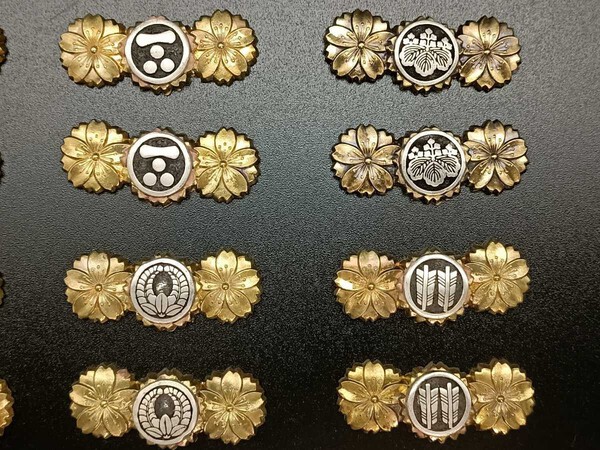











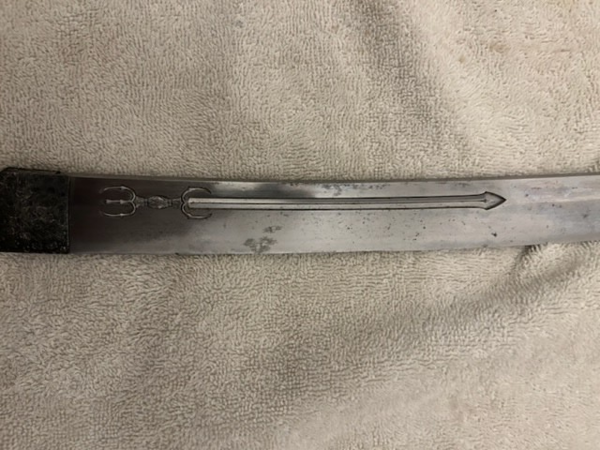

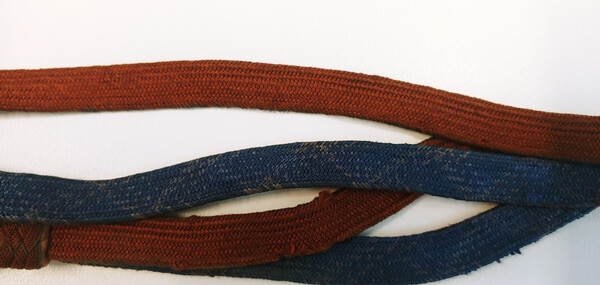
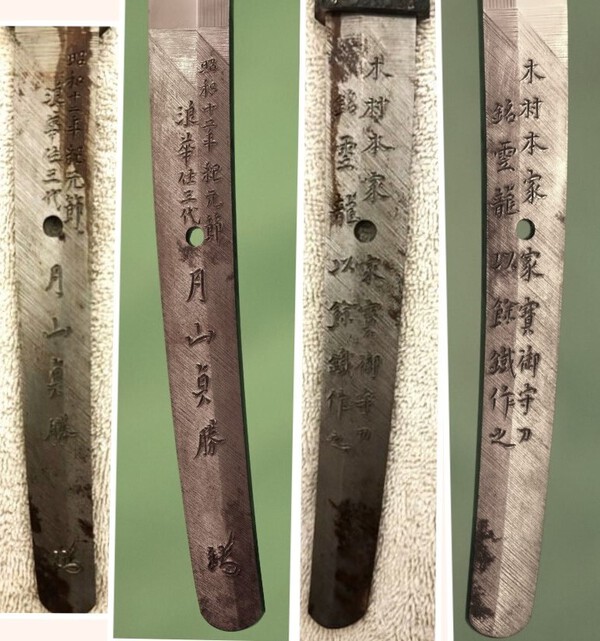
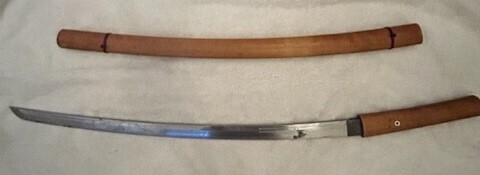


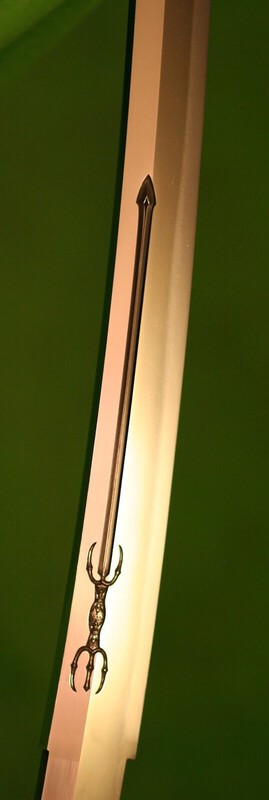








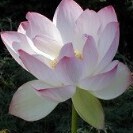
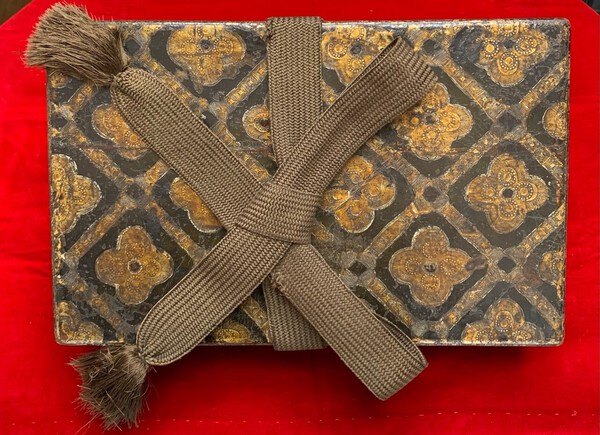

.thumb.jpg.bc10b59027a00aa142dce0349f3ba9e0.jpg)



